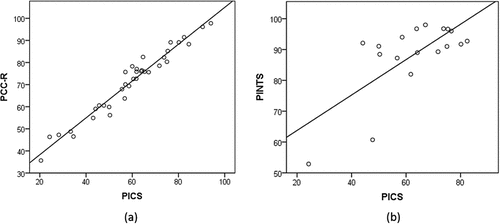Figures & data
Table 1. Demographic information of participating speakers, including – apart from sex and age – average score value on the intelligibility in context scale (ICS; McLeod et al., Citation2012), and information regarding SLP diagnoses.
Table 2. Sample descriptions listing the number of intelligible words in each of the four samples for each child speaker. For the connected speech samples – concurrent commenting and free conversation – the number of unintelligible syllables are given within parentheses.
Table 3. Summary of differing conditions for the first and second round of evaluations of intelligibility.
Table 4. Average (and SD) values of articulation proficiency, measured by PCC-R and PICS, across the four speech elicitation tasks (Imitation, naming, concurrent commenting and free conversation), and intelligibility, measured by PINTS, across the two tasks involving connected speech (Concurrent commenting and free conversation).
Table 5. Spearman rank correlation coefficients (and p-values) for associations between the PICS, the PCC-R, and the PINT.
Figure 1. Associations between (a) PICS and PCC-R across all four tasks, and (b) PICS and PINTS, across the two tasks involving connected speech. Each dot in the graphs represents a speech sample.

